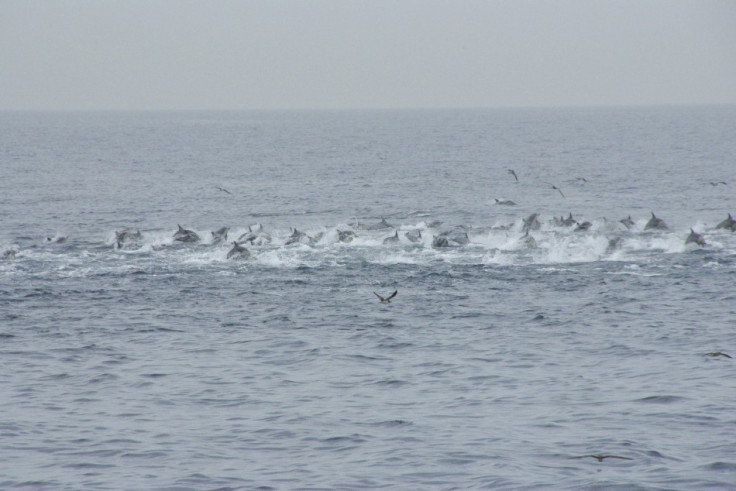Mercury Pollution of Oceans Triples Since Industrial Revolution

Mercury concentrations in the surface waters of the earth's oceans have tripled since the Industrial Revolution, according to a study, while the overall levels show a 10% increase.
The study, published in Nature magazine, indicates that if present polluting trends continue, the next 50 years can add the same amount as contributed in the last 150 years. The study also showed that earth's oceans today contain about 60,000 to 80,000 tons of mercury pollution.
This could mean some fish contain at least three times more mercury than 150 years ago, or even more, according to the scientists who undertook the study.
Mercury is a naturally occurring element but is also produced as a by-product of human activities such as burning coal and making cement. The present study has been the first attempt to separate the two contributions by looking at different ocean levels. It looked at data obtained from 12 sampling cruises over the past eight years.
Researchers who contributed to the study started by looking at data sets that offer detail about oceanic levels of phosphate, a substance that behaves in much the same way as mercury in the ocean. Phosphate is a nutrient that, like mercury, is taken up into the marine food web by binding with organic material.
By determining the ratio of phosphate to mercury in water deeper than 1,000 meters (3,300 feet) – this is essentially the part not in contact with Earth's atmosphere since the Industrial Revolution – they estimated naturally occurring mercury that results from weathering of rocks on land.
Databases of CO2 in ocean waters are extensive and readily available for every ocean basin. As much of the mercury and CO2 are derived from same human activities, the team first derived an index relating the two and used that to calculate the amount and distribution of mercury in the world's ocean basins that originated from human activity.
The analysis showed that ocean waters shallower than about 100m (300ft) have tripled in mercury concentration since the Industrial Revolution and that the ocean as a whole has shown an increase of roughly 10% over pre-industrial mercury levels.
The study was put together by researchers at the Woods Hole Oceanographic Institution (WHOI), Wright State University, Observatoire Midi-Pyréneés in France, and the Royal Netherlands Institute for Sea Research.
"Mercury is a priority environmental poison detectable wherever we look for it, including the global ocean abyss," says Don Rice, director of the National Science Foundation (NSF)'s Chemical Oceanography Program, which funded the research. "These scientists have reminded us that the problem is far from abatement, especially in regions of the world ocean where the human fingerprint is most distinct."
Toxic Mercury
Industrial mercury pollution is often in the inorganic form which is less toxic, but aquatic organisms and vegetation in rivers, lakes, and bays convert it to toxic, organic methylmercury. Fish eat contaminated vegetation, and the mercury becomes biomagnified in the fish. Fish protein binds more than 90% of the consumed methylmercury so well that even the most vigorous cooking methods like deep-frying or boiling cannot remove it.
Mercury induces neurologic, gastrointestinal and renal organ disorders besides cognitive impairments.
Other than batteries and thermometers, mercury can also be found in fungicides used in the agricultural industry. In medicine, mercury is used in dental amalgams and various antiseptic agents.
© Copyright IBTimes 2025. All rights reserved.





















